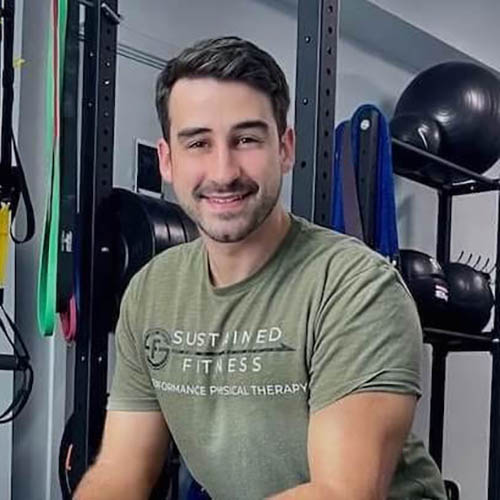Orthopedic physical therapy is a specialized branch within the field of orthopedics and physical therapy. It addresses injuries and disorders of the musculoskeletal system—the intricate network of bones,
What Is Orthopedic Physical Therapy & How Can It Help You?

Orthopedic physical therapy is a specialized branch within the field of orthopedics and physical therapy. It addresses injuries and disorders of the musculoskeletal system—the intricate network of bones, muscles, ligaments, and tendons that support your body’s movement. Whether you suffer from joint pain, are recovering from joint replacement surgery, or need rehabilitation for sports medicine injuries, orthopedic physical therapy offers an effective, non-invasive solution to help you regain mobility and improve your overall function. Through individualized treatment plans, physical therapy techniques, and hands-on care, this form of therapy can improve your quality of care and put you on the road to recovery.
What Is Orthopedic Physical Therapy?
At its core, orthopedic physical therapy focuses on restoring function to the musculoskeletal system after an injury, surgery, or due to chronic orthopedic conditions like arthritis or scoliosis. This therapy works by combining a variety of therapeutic modalities such as manual therapy techniques, exercise tools, and personalized rehabilitation plans to address acute pain, improve blood flow, and promote healing of damaged tissues. Patients undergoing physical therapy orthopedics benefit from targeted care aimed at strengthening muscles, restoring joint mobility, and alleviating musculoskeletal pain.
Orthopedic physical therapy is one of the most sought-after specialties in the field. It focuses on treating injuries and disorders related to the bones, muscles, ligaments, tendons, and joints, providing essential care for individuals recovering from surgery or managing chronic pain.
Whether you’re recovering from a hip replacement, managing knee pain, or working to prevent a future injury, orthopedic physical therapy provides a comprehensive range of services designed to meet your specific needs.
Benefits of Orthopedic Physical Therapy
Orthopedic physical therapy offers a variety of benefits for those recovering from injury or surgery or managing chronic conditions. Here are the key advantages:
- Pain reduction: Through hands-on therapies like soft tissue mobilization, joint mobilization, and manual therapy techniques, your therapist can reduce shoulder pain, neck pain, or ankle pain and improve your overall comfort.
- Improved mobility: Restoring range of motion to stiff joints, particularly after joint replacement surgery or orthopedic surgery, is essential for regaining function.
- Muscle strengthening: Strengthening weakened muscles can enhance joint stability and improve balance, reducing the risk of future injuries.
- Injury prevention: Therapists offer patient education on safe movement patterns and athletic training techniques to prevent common issues such as sports-related injuries and knee instability.
- Faster recovery: Personalized care and individualized treatment plans accelerate the healing process following sports medicine injuries, work-related injuries, or accidents.
Orthopedic physical therapy can also be highly effective for competitive athletes recovering from sports injuries. By focusing on restoring muscle function, improving mobility, and reducing chronic pain, athletes can return to their sports with greater strength and resilience. The physical therapy experience for athletes often includes a combination of rehabilitation techniques and exercises tailored to their specific needs, ensuring a smooth recovery process. This personalized approach helps athletes achieve better pain relief while minimizing the risk of re-injury.
In addition to these physical benefits, orthopedic physical therapy fosters an active lifestyle by empowering individuals to maintain their health and stay active.
What Is an Orthopedic Physical Therapist?
An orthopedic physical therapist is a licensed healthcare professional who specializes in the treatment of orthopedic conditions. They work with patients recovering from orthopedic injuries to create customized treatment plans that promote healing, relieve joint pain, and improve mobility.
What Does an Orthopedic Physical Therapist Do?

Orthopedic physical therapists use a variety of therapeutic modalities to help patients recover from injuries and improve their overall physical health. Their treatments often include:
- Strength training: Customized exercise programs target weak muscles to rebuild strength and stability, particularly in areas prone to injury like the knee or ankle.
- Massage therapy: A common technique for reducing tension in connective tissues and promoting blood flow to injured areas.
- Heat or ice application: Used to manage inflammation, reduce swelling, and ease acute pain in conditions like plantar fasciitis or post-surgery recoveries.
- Muscle stimulation: Electrical stimulation therapies like TENS or NMES can help reduce pain and promote muscle recovery.
- Exercise: Physical therapists develop customized routines using exercise tools to target specific areas of the body, helping to strengthen muscles and increase flexibility.
- Patient education: Educating patients on how to manage their condition and prevent future injuries is a cornerstone of quality care. This includes advice on posture, daily movements, and maintaining an active lifestyle.
- Joint mobilization: Manual techniques to restore mobility and function to stiff or painful joints.
In many physical therapy clinics, physical therapist assistants play a crucial role in supporting treatment. They work closely with the lead therapist to ensure patients receive comprehensive care. Physical therapist assistants assist in executing exercises, preparing treatment areas, and educating patients on proper techniques to maximize recovery. This team-based approach helps deliver high-quality, patient-centered care that addresses various musculoskeletal conditions effectively.
Education and Training
Orthopedic physical therapists complete rigorous training, usually obtaining a physical therapy degree such as a Doctor of Physical Therapy (DPT) before specializing in orthopedics physical therapy.
Becoming a physical therapist requires completing a rigorous educational path. This typically involves six to seven years of academic study, including both undergraduate coursework and a Doctor of Physical Therapy (DPT) degree program. They may also work closely with physical therapist assistants to ensure patients receive consistent and high-quality care. In some settings, therapists collaborate with occupational therapy or athletic training teams to provide a well-rounded approach to rehabilitation.
What to Expect at the Orthopedic Physical Therapist
When you first visit an orthopedics physical therapy clinic, your treatment will begin with a comprehensive evaluation. Your therapist will assess your medical history, your symptoms, and your functional limitations. They will then develop an individualized treatment plan designed to address your specific needs. Treatments may include hands-on therapies, exercise routines, and other physical therapy services aimed at improving your mobility and reducing pain.
What Conditions Does an Orthopedic Physical Therapist Treat?
Orthopedic physical therapists treat a wide range of conditions affecting the musculoskeletal system.
Conditions Affecting The Musculoskeletal System
Here are some common diagnoses they manage:
- Arthritis
- Neck pain or back pain
- Work injuries or accidents
- Sports injuries or accidents
- Post-surgical recoveries such as hip replacement or knee replacement
- Knee instability
- Shoulder pain and rotator cuff injuries
- Foot and ankle conditions
- Prosthetic training
Rehabilitation After Surgery
Following surgery, such as joint replacement surgery or repairs to ligaments or tendons, orthopedic physical therapy plays a critical role in ensuring a successful recovery. The therapy team works to reduce pain, restore mobility, and prevent complications.
Rehabilitation After Acute Injury
Acute injuries, such as sprains, fractures, or muscle tears, require targeted treatment to restore normal function. Orthopedic care helps accelerate recovery and reduce the risk of long-term complications.
Rehabilitation After Chronic Injury
For individuals dealing with chronic injuries or conditions, such as arthritis or plantar fasciitis, orthopedics physical therapy offers long-term management strategies to maintain function and improve quality of care.
Orthopedic physical therapy also emphasizes improving the overall quality of life for individuals suffering from long-term musculoskeletal conditions. For patients dealing with chronic pain from conditions like arthritis or long-standing injuries, the combination of hands-on therapies and exercises can significantly enhance their day-to-day functioning. The goal is to reduce dependency on medication while improving strength, flexibility, and mobility, which ultimately improves their ability to perform daily tasks and engage in activities they love.
What Types of Treatments Are Used?
Orthopedic physical therapists use both passive modalities (therapies where the therapist does the work) and active modalities (exercises and activities the patient performs) to treat their patients.
- Passive Modalities
Our passive modalities are therapies where the patient plays a more passive role, allowing our therapists to work on the affected areas to promote relaxation, reduce inflammation, and relieve pain.
- Active Modalities
Our active modalities engage the patient more directly by incorporating exercises and activities that promote strength, flexibility, and endurance. These modalities are essential for improving overall physical function and reducing the risk of re-injury.
Hot/Cold Therapy
Hot and cold therapy is used to manage swelling, reduce pain, and improve circulation in injured areas. Heat is applied to relax muscles and improve flexibility, while cold therapy is effective for reducing inflammation and acute pain.
E-stim (TENS or NMES)
- Transcutaneous Electrical Nerve Stimulation (TENS): This method is used primarily for pain relief by sending low-voltage electrical currents through the skin to stimulate nerves.
- Neuromuscular Electrical Stimulation (NMES): This type of e-stim is used to enhance muscle function by contracting muscles that are weakened due to injury or surgery, promoting recovery.
Traction
Traction therapy is used to relieve pressure on the spine and reduce back pain by gently stretching the spine. This is especially useful for those suffering from herniated discs or sciatica.
Hydrotherapy
Water-based therapy, or hydrotherapy, allows for low-impact rehabilitation, making it ideal for those with joint or muscle conditions. The buoyancy of water supports the body and reduces stress on joints, promoting relaxation and movement.
Soft Tissue Manipulation
Soft tissue manipulation involves manual techniques that focus on releasing tension, improving blood flow, and promoting the healing of injured muscles and connective tissues.
Joint Mobilization
This manual therapy technique is used to improve joint function, restore range of motion, and reduce stiffness. Joint mobilization is often applied to areas like the shoulders, knees, and hips to treat orthopedic conditions.
Dry Needling
Dry needling is a specialized technique used to relieve muscle tightness and pain by inserting fine needles into trigger points in the muscles. This helps release muscle tension and improve mobility.
Laser or Light Therapy
Laser or light therapy uses concentrated light energy to promote tissue repair, reduce inflammation, and accelerate the healing process in both acute and chronic injuries.
Kinesiology Taping
Kinesiology taping provides support to muscles and joints without restricting movement. The tape is applied to areas needing stabilization, helping with recovery and reducing the risk of re-injury.
How Long Does Orthopedic Physical Therapy Treatment Last?
The duration of orthopedic physical therapy depends on the severity of the condition and your progress. For acute injuries, treatment may last a few weeks, while chronic conditions or post-surgical rehabilitation could require several months of ongoing therapy.
Do You Need a Referral to See a Physical Therapist?
In many cases, you don’t need a referral to visit an orthopedics physical therapy clinic. However, some insurance plans or states may require one, so it’s best to check with your provider beforehand.
How Can You Get the Best Results From Orthopedic Physical Therapy?

To get the most from your treatment experience, it’s important to follow your therapist’s instructions closely. Engage actively in exercises, keep up with your home program, and communicate any concerns with your therapist. Consistency and communication are key to achieving successful outcomes in orthopedic care.
Collaborating with your primary care physician and other healthcare providers, such as occupational therapy specialists, can further enhance your results in orthopedic physical therapy. Together, this healthcare team can ensure a more holistic and integrated approach to your care, addressing both the physical and functional aspects of your recovery. This collaboration is especially important for those recovering from sports injuries or managing chronic pain, as it promotes a comprehensive plan that supports long-term recovery and wellness.
How to Find an Orthopedic Physical Therapist
Finding the right therapist can make a significant difference in your recovery. To locate a qualified orthopedic specialist, consider searching online for “orthopedics physical therapy near me,” asking for recommendations from your physician, or checking with professional organizations like the American Physical Therapy Association (APTA).
Conclusion
Orthopedic physical therapy offers a powerful, non-invasive way to recover from orthopedic injuries, manage chronic conditions, and restore function after surgery. With the help of skilled therapists, you can regain mobility, reduce pain, and get back to living an active lifestyle.
The demand for physical therapists continues to rise. According to the U.S. Bureau of Labor Statistics (BLS), jobs in this field are projected to increase by 15% between 2022 and 2032, adding approximately 13,900 new positions annually.
At Sustain PT and Performance, we are committed to providing tailored Physical Therapy Services that help you achieve lasting recovery and optimal performance. Whether you’re managing an injury, recovering post-surgery, or looking to enhance your athletic capabilities, our team of experts is here to guide you through personalized treatment plans. We combine evidence-based techniques with a hands-on approach to ensure you regain strength, mobility, and confidence. Take the next step in your wellness journey by requesting an appointment today!
FAQs
How long does it take to see results with orthopedic physical therapy?
Results vary based on the condition being treated, but many patients notice improvements in joint pain and mobility within the first few weeks of treatment.
Can orthopedic physical therapy help prevent surgery?
Yes, for many patients with conditions like arthritis or knee pain, orthopedic physical therapy can help manage symptoms and avoid the need for surgery by strengthening muscles and improving joint function.
Is a referral required to begin orthopedic physical therapy?
In most cases, you do not need a referral to start treatment, but it’s always a good idea to check with your insurance provider to ensure coverage.
Dr. Adam Babcock PT, DPT
“We Help Active Adults Quickly Recover From Pain Or Injury So They Can Stay Active, Get Back To What They Love To Do, and Do It For Decades”






